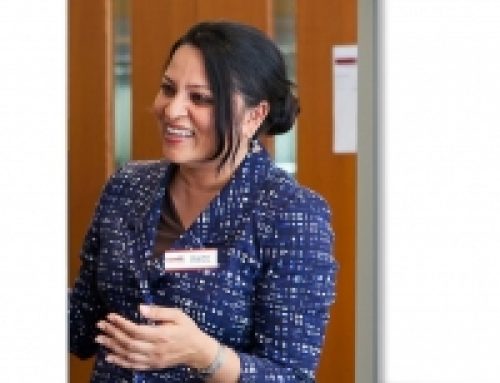The Lifestyle Change: MEDS
Jasbina Ahluwalia asks Ashish Mathur, Co-Founder and Executive Director of the South Asian Heart Center at El Camino Hospital: With LPA, is the test for that a blood test as well? Is it a specialized blood test?
_____
Ashish Mathur
The Lifestyle Change: LPA Blood Test
Yes. It’s a blood test. It’s not a swab or a genetic DNA test. It’s just a blood test.
You can’t really change your LPA much because it’s genetically determined but then we’ve become very aggressive about looking at all of the other risk factors and bringing them down to normal levels.
The Lifestyle Change: Attention to Blood Pressure
If your blood pressure is elevated, we really want to first try to bring down your blood pressure. That’s a key thing.
The Lifestyle Change: Diabetes Attention
Or, if you are hovering or you have family members who have diabetes, then we have become very aggressive on the lifestyle associated with reducing your risk for diabetes.
That’s going to multiply your risk for heart attack. The LPA is one marker.
The Lifestyle Change: Genetic Markers
We also look at other genetically driven markers. They are what is called particle sizes and particle numbers.
Every LDL and HDL is actually split up into different sized particles. The size matters.
If they are small LDL or bad cholesterol particles, they are more atherogenic.
You can understand or envision the interior walls of the arteries being like a sieve. They are porous and let particles through that build the plaque. Then what you’ll see is the smaller particles are more likely to go through than larger particles.
The Lifestyle Change: Reduce Risk
We look at this as a repackaging issue. In order to reduce your risk, we will work on lifestyle that helps you repackage your LDL from small dense particles, to the large buoyant particles, which are less atherogenic.
At the same time, HDL which is the good cholesterol, is also is sub-divided into different particles.
Again, this is genetically determined. However, you’re able to repackage those. You’re able to get large, buoyant HDL particles to be the predominant ones, which are protective.
In just looking at your HDL number, you may have a good HDL number, but it may not be the kind of particles that are protective.
The Lifestyle Change: South Asian Trend
In Indians, we find that. We test for those, and the good news is that there are two lifestyle changes. We are able to repackage them and get them to the right size and number. That’s the genetic aspect that we look for.
We also look for inflammation. Inflammation probably explains the heart attacks that are not explained through just looking at cholesterol.
It’s a very important factor, so we pay special emphasis on that and we test that. This test actually can be done and is done by a lot of physicians as well. It’s called the VIP test.
Then we look at markers for diabetes. We look at insulin resistance. We look at your Hemoglobin A1C, your fasting glucose and your fasting insulin.
That gives us a good idea of what your metabolic disorders are and whether you are prone or pre-disposed to this metabolism.
The Lifestyle Change: Numbers Game
We’ve found as a matter of fact as we’re looking at the numbers at the center itself, that combination of fasting insulin, fasting glucose and Hemoglobin A1C is actually very telling or CT scans that we see of individuals where we see the plaque buildup.
It becomes very important to test for that. That’s our assessment phase, the “AIM” of the AIM to Prevent. Then we wind up with the “I” part, which is the intervention or the Intervene.
In that intervention, we focus on lifestyle.
The Lifestyle Change: MEDS Method
Our focus on lifestyle is what we call Lifestyle MEDS for medication, exercise, diet and sleep.
We have expert counselors who will actually go through and look at how you fare.
They look at what your lifestyle habits are, with these four factors and areas, and help you with getting the Lifestyle MEDS incorporated into your lifestyle.
The Lifestyle Change: Exercise and Diet
For example, I’ll take the exercise and diet, which is the middle part of the MEDS program. Most people can relate to exercise and diet. They understand that if I change my exercise, it’s going to help me, or if I change my diet it’s going to help me.
We have a dietician who will actually counsel you. The difference is that our counselor is South Asian, so if you have a predominantly South Asian diet, an Indian diet can be varied from the North to the South and the East and the West.
You don’t want to change your diet radically as you go forward. You want to stay within the confines of the normal diet.
The Lifestyle Change: Gradual Dietary Changes
If you are from the South, you’re not going to be changing that very easily. It’s going to be very difficult to get oatmeal into your diet or other things that we know are cardio protective.
We try to focus on the things that you eat and try to bring about changes within that. For example, we may ask you to mix a few things up or look at what goes inside your masala dosa. We may mix it up with some more vegetables and things like that.
With baby steps, we try to move you from things that are less cardio protective. In the diet, carbohydrates and greens end up actually causing a lot of havoc for South Asians.
Our intent is to get them to more protein-based sources, looking at the healthy fat, and looking at carbohydrates but looking at the complex carbohydrates and ancient grains that you can incorporate to help you with making the change there. Our dietitian can help you with that.
The Lifestyle Change: Strength Training
Then our exercise physiologist will work with you on the exercise front. In our fitness consultations, we have introduced phone-based fitness consultation as well so you can understand how you can incorporate strength training, which is very sorely missed by South Asians.
They understand cardio. They become weekend warriors and do hikes and those sorts of things, but they do not do the strength training, which is very important to reduce the risk of diabetes and cardiovascular disease. That’s the exercise physiologist. Then we have medication teachers who will orient you on medication.
The Lifestyle Change: De-Stress
Starting in December, I’m going to start teaching a rest management class that will incorporate both sleep and meditation as a way to de-stress your life.
Those orientations are provided as part of the intervention and recommendations are made.
The Lifestyle Change: Long-Term
Finally, the “M” phase, which is “manage,” is the most important phase to us. It is how you manage the interventions and how you incorporate these lifestyle changes.
The coach is assigned to you to help you with that for one year. They look at the recommendations we make and then help you monitor your progress through these recommendations and motivate you through making these changes.
_____
Tell Us:
Have you undergone a lifestyle change for your health benefit? What advice do you have from your experience? Drop us some tips below in the comments section.
_____
The above is an excerpt from Jasbina’s interview with Ashish Mathur
The entire interview transcript is at: Ashish Mathur NetIP (Network of Indian Professionals) Interview – Heart Diseases and their Prevention Tools for South Asians
Listen to the entire interview on: Intersections Match Talk Radio – Jasbina’s Lifestyle Show
Listen to the entire interview on Blog Talk Radio: NetIP Listen to the entire interview on iTunes _____





